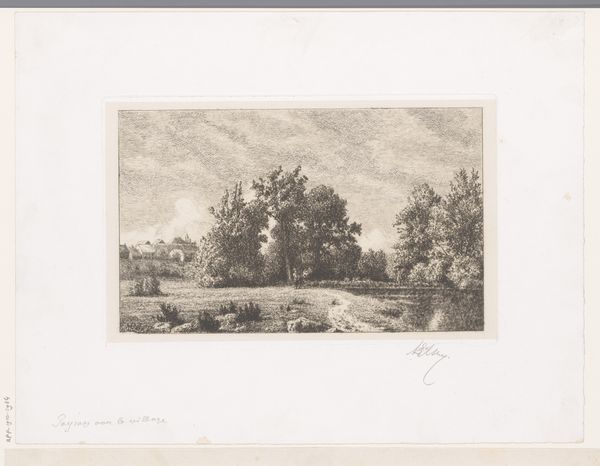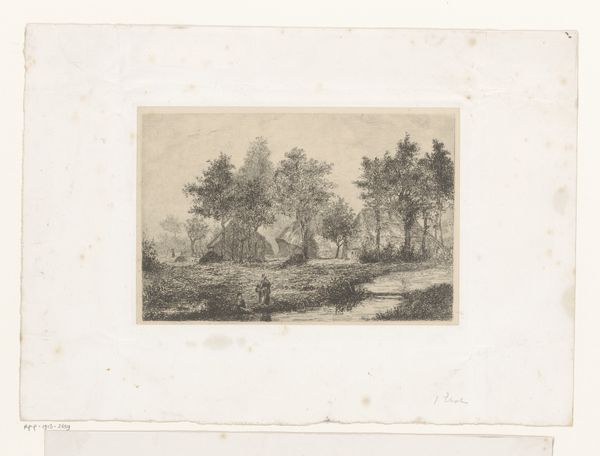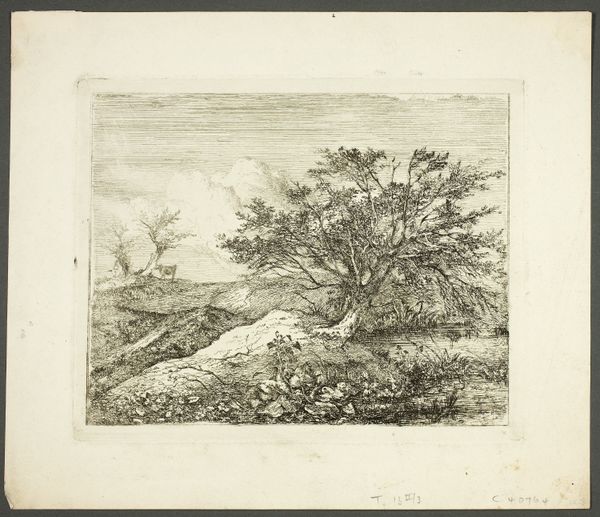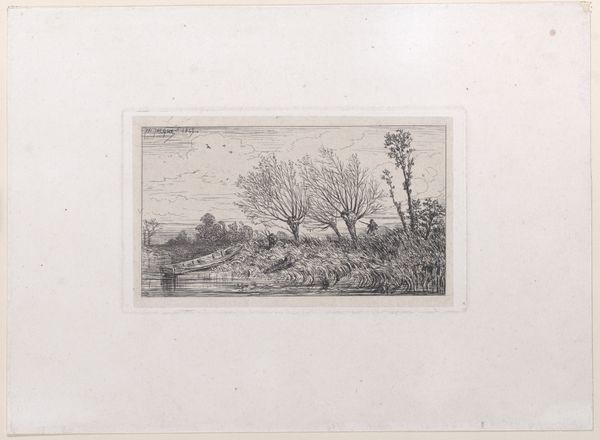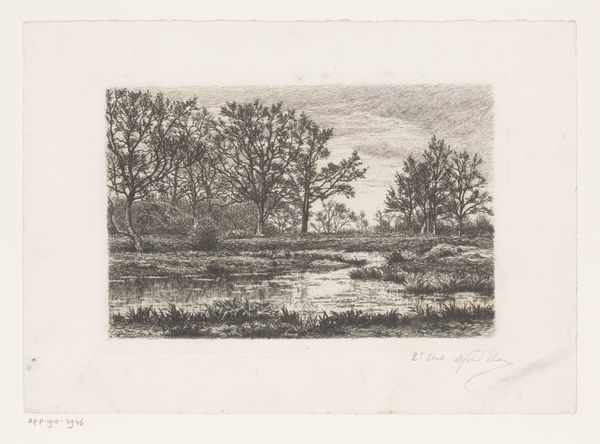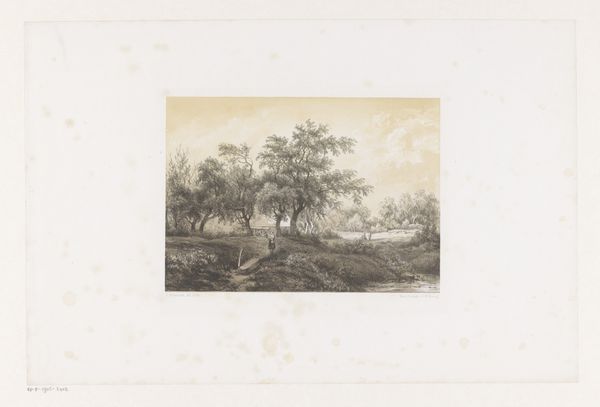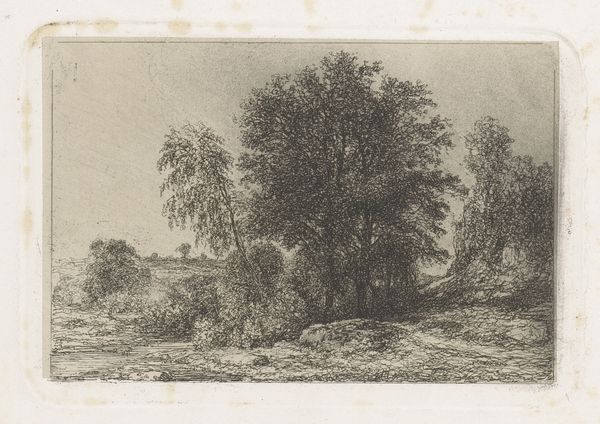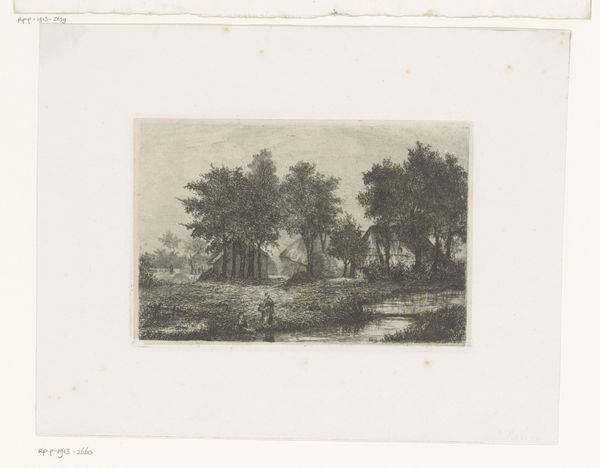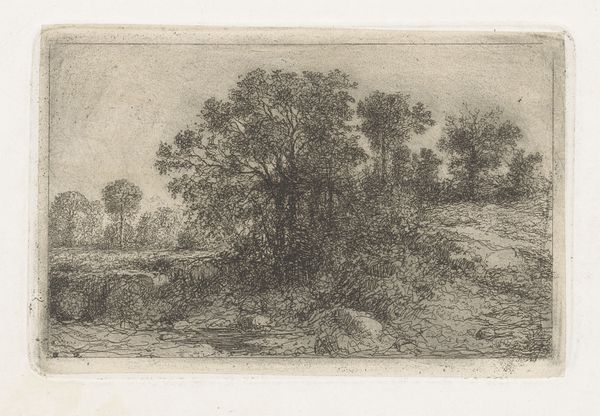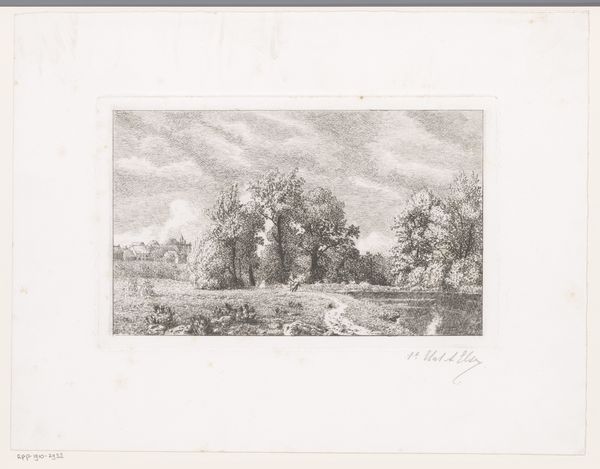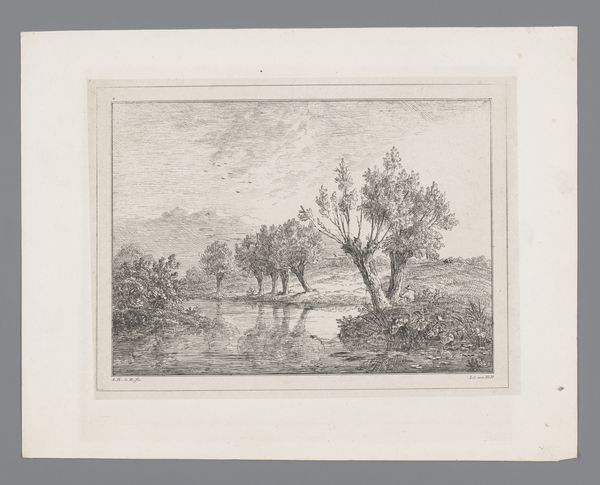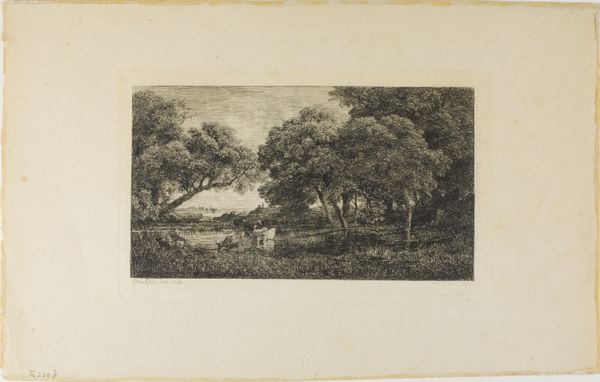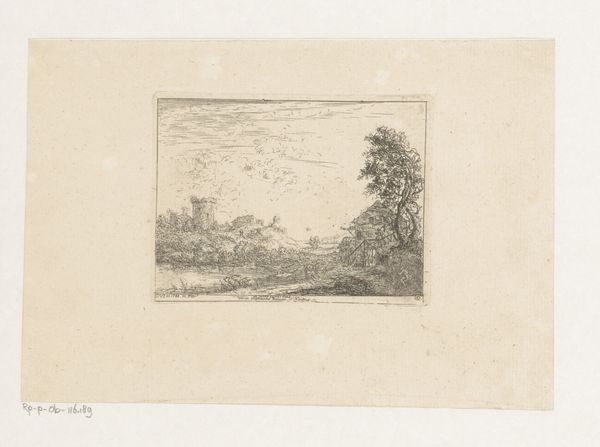
print, etching, engraving
# print
#
etching
#
landscape
#
etching
#
engraving
#
realism
Dimensions: 205 mm (height) x 265 mm (width) (plademaal)
Curator: Georg Emil Libert created this etching, titled "Landskab," back in 1841. It's a compelling piece, held in the collection of the SMK - Statens Museum for Kunst. Editor: The landscape feels serene and muted, doesn't it? I immediately notice the quiet stillness—a melancholic echo almost. The limited color palette enhances the dreamlike quality. Curator: I'm struck by the dead tree to the left. Its stark silhouette against the tranquil water could symbolize the transience of life, a potent symbol particularly relevant in a period grappling with social and political upheaval. The reflection on the water reinforces this theme of fleeting existence. Editor: Exactly. Reflections are loaded with meaning! Think of Narcissus, but also the cultural memory we associate with mirroring – do we see our true selves, a distorted version, or even something completely new? What do you make of the trees across the lake seeming so dense? Almost impenetrable. Curator: The density you observe, I believe, anchors the composition within the artistic and political context of burgeoning Romantic nationalism in Denmark at the time. These forests become coded emblems of cultural resilience and self-determination. In that context, that dying tree on the bank, perhaps a comment about that era. Editor: An intriguing interpretation. Speaking to artistic lineage, I notice how the texture created with engraving suggests the older printmaking tradition – which in turn references a collective and enduring visual language tied to nature and nation. Curator: I concur. Furthermore, placing this landscape into a broader scope, particularly using eco-critical and environmental historical perspectives, pushes our comprehension about humankind's relationship with nature to interrogate further what these environmental images communicate about shifting values during industrialization. Editor: Looking again, I am struck how the print's understated beauty speaks of themes as relevant today as they were almost two centuries ago—memory, identity, and the impact we leave behind on this world. Curator: Indeed, that speaks to its enduring relevance, its continuing ability to encourage new dialogues about our collective histories and environmental future.
Comments
No comments
Be the first to comment and join the conversation on the ultimate creative platform.
